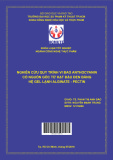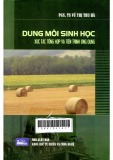Tài liệu Thư viện số
- Giáo trình SPKT (418 )
- Luận văn, luận án (2865 )
- Đồ án, khóa luận tốt nghiệp (9613 )
- Tài liệu tham khảo (1350 )
- BC nghiên cứu khoa học (1589 )
- Kỷ yếu hội thảo (12 )
- Tạp chí khoa học (62 )
- Luật (349 )
- Cơ khí chế tạo máy (2344 )
- Điện - Điện tử (4378 )
- Cơ khí động lực (1242 )
- Xây dựng - Kiến trúc (3233 )
- Thực phẩm, Môi trường (1087 )
- Công nghệ thông tin (3074 )
- Kinh tế - Quản lý (4140 )
- In - Truyền thông (383 )
- CN May - thời trang (832 )
- Nghệ thuật - Ẩm thực (1516 )
- Nông - Lâm - Ngư Nghiệp (763 )
- Y học - Sức khỏe (620 )
- Khoa học xã hội (3535 )
- Lịch sử - Địa lý - Du lịch (492 )
- Khoa học tự nhiên (2112 )
- Văn học (2585 )
- Ngôn ngữ (4289 )
- Khoa học ứng dụng (408 )
- Thông tin Tuyển sinh (61 )
- Thông tin -Thư viện (418 )
- Thể loại khác (1376 )
Danh mục TaiLieu.VN
- Mẫu Slide Powerpoint
- Kinh Doanh Marketing (39320)
- Kinh Tế - Quản Lý (30571)
- Biểu Mẫu - Văn Bản (123435)
- Tài Chính - Ngân Hàng (23744)
- Công Nghệ Thông Tin (56521)
- Tiếng Anh - Ngoại Ngữ (9738)
- Kỹ Thuật - Công Nghệ (44193)
- Khoa Học Tự Nhiên (27343)
- Khoa Học Xã Hội (43227)
- Luật - Kinh tế luật (6560)
- Văn Hoá - Thể thao - Du Lịch (71283)
- Y - Dược - Sức Khoẻ (83234)
- Nông - Lâm - Thuỷ sản (16418)
- Luận Văn - Báo Cáo (217024)
- Tài Liệu Phổ Thông (244133)
- Trắc Nghiệm Online (213578)
- Trắc Nghiệm MBTI
- Trắc Nghiệm Holland
Microorganisms and fermentation of traditional foods
"Fermentation is one of the oldest technologies for processing of food and beverages to improve qualities such as extended shelf-life and organoleptic properties. Fermented foods usually have an improved microbial stability and safety, alongwith acceptable taste, and some products can be stored even at ambient temperatures. The common microorganisms used in food fermentations are bacteria, yeasts and molds. The lactic acid bacteria, notably lactobacilli and streptococci are the most commonly found microorganisms in fermented foods, having the ability to produce lactic acid from carbohydrates. Other important bacteria in fermented foods are the acetic acid producing Acetobacter and the Bacillus species. The most important benefi cial yeasts in terms of desirable food fermentations belong to the Saccharomyces family, especially S. cerevisiae. These yeasts play a crucial role in the food industry as they produce enzymes that bring about various desirable biochemical reactions involved in the production of alcoholic beverages. Also, few fungi are usually used to produce a great number of popular cheeses"
Từ khóa: Fermentation -- Fermentation, Fermented foods, Food, Biotechnology, Microbiology
7 p ovanke 14/08/2020 585 3
Bạn đang xem trang mẫu tài liệu này.







